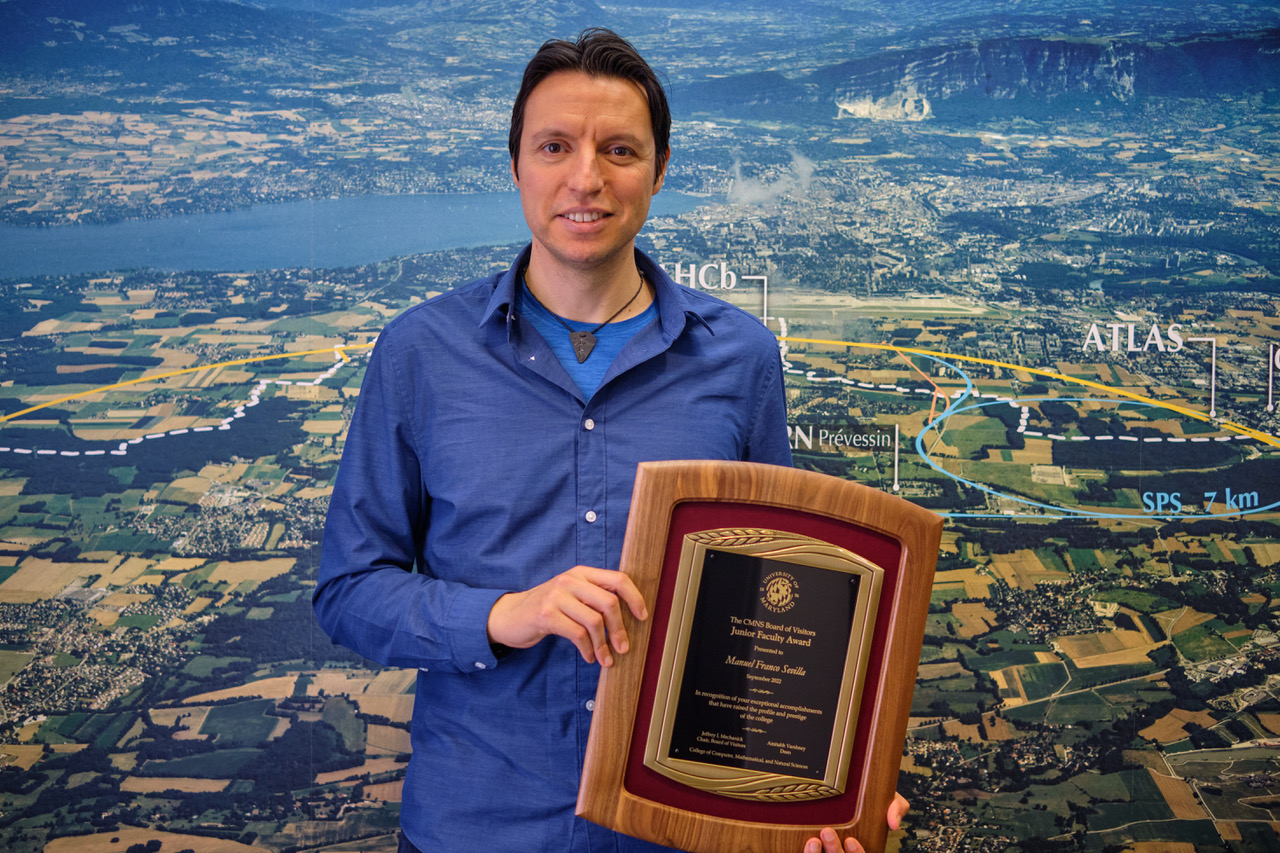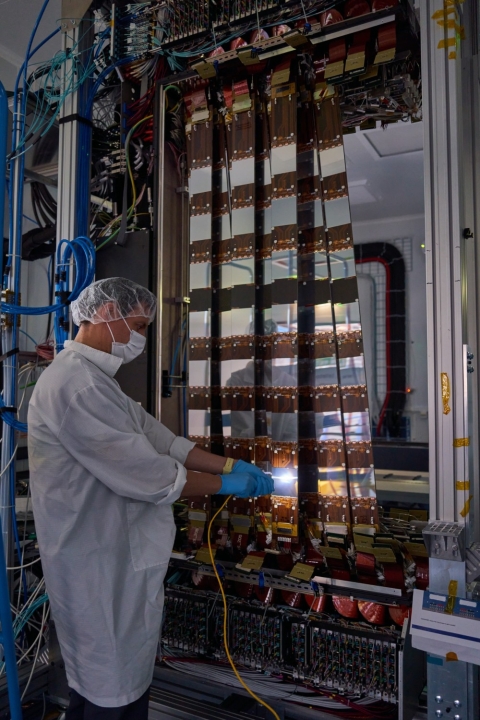Manuel Franco Sevilla has received the 2022 Junior Faculty Award from the Board of Visitors of the College of Computer, Mathematics and Natural Sciences in recognition of his “exceptional accomplishments that have raised the profile and prestige of the college”.
Franco Sevilla is a particle physicist doing research at CERN’s Large Hadron Collider’s beauty (LHCb) experiment, which employs “beauty” (or “b”) hadrons produced in high-energy collisions of protons to study the fundamental laws of our Universe. Manuel Franco Sevilla
Manuel Franco Sevilla
His research focuses on measurements that test lepton universality, a fundamental assumption within the Standard Model of particle physics that states that the interactions of all charged leptons (electrons, muons, and taus) differ only because of their different masses. His thesis in 2012 saw the first hints of possible lepton universality violation, and since then, several measurements in experiments across the world have found similar hints. He has covered this topic in multiple international forums and in reviews for Nature and Review of Modern Physics.
Additionally, Franco Sevilla works on the Upstream Tracker (UT), a new silicon tracker that is a crucial part of LHCb’s ongoing upgrade to achieve data taking rates five times larger than previously possible. Together with Professor Hassan Jawahery, he co-led the development and production of the readout electronics for the UT, a total of over 600 main boards and 3,000 ancillary ones. This immense effort included contributions from an electronics engineer, three postdocs, four graduate students and the recruitment and training of a group of 12 undergraduate students who were instrumental during the testing and assembly phases of the project.
Last year Franco Sevilla was named deputy project leader of the UT and spent the second half of 2022 at CERN coordinating the assembly and installation of this subdetector into the LHCb experiment, an effort that involved a team of over 25 engineers, technicians, postdocs, and students as well as other CERN resources such as survey, transportation, or radiation protection teams. Some pictures of theses activities are shown below.
